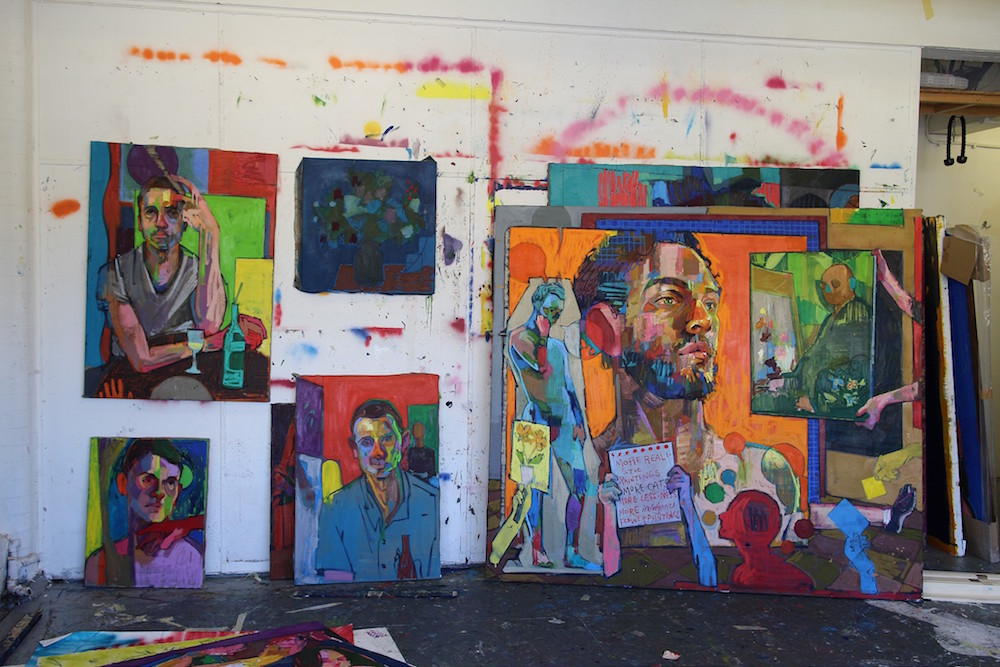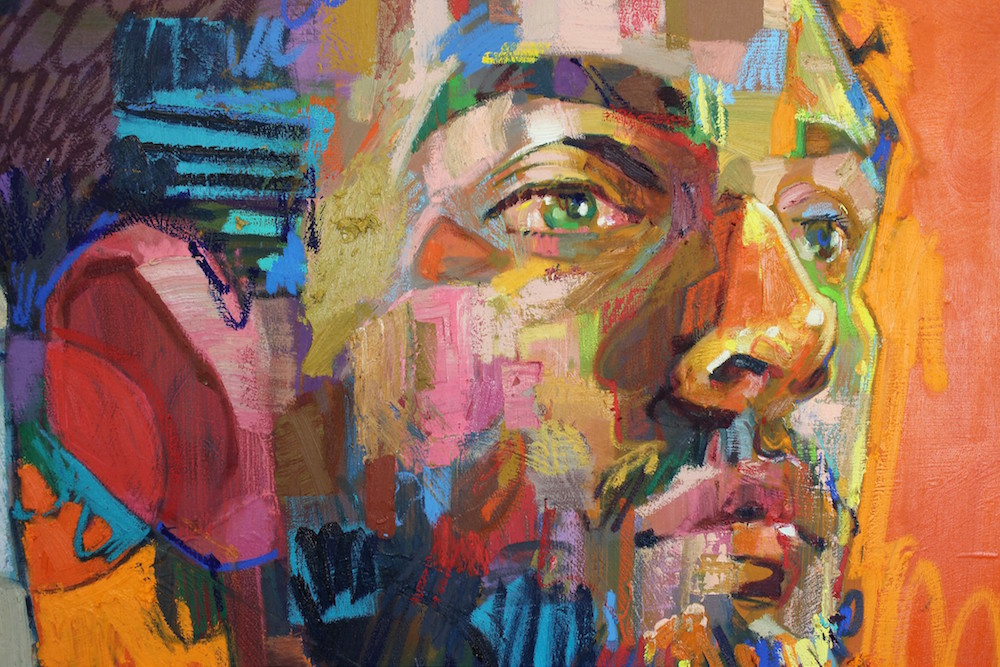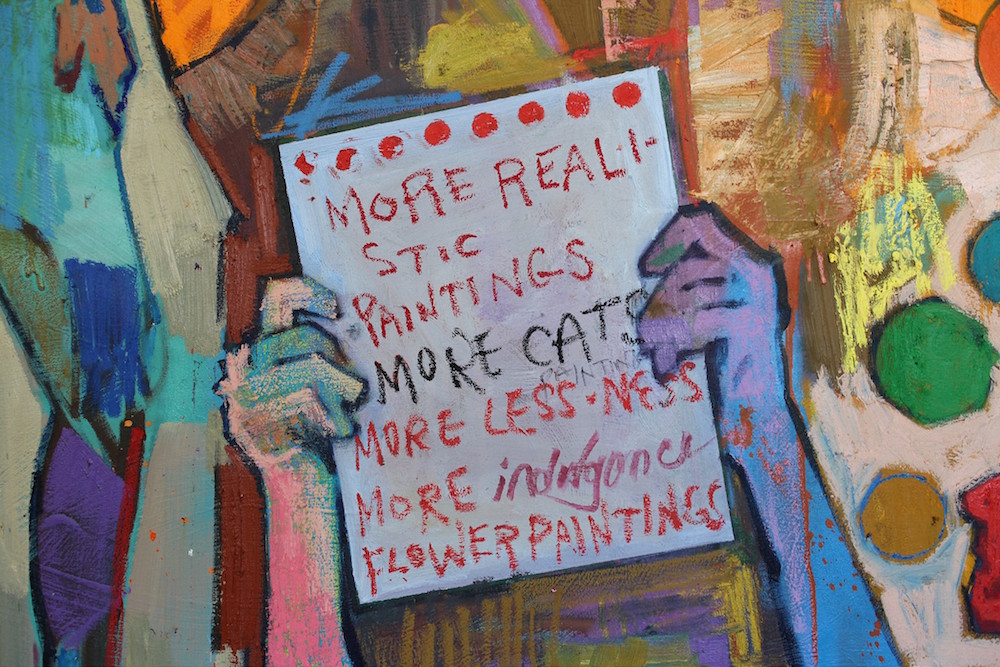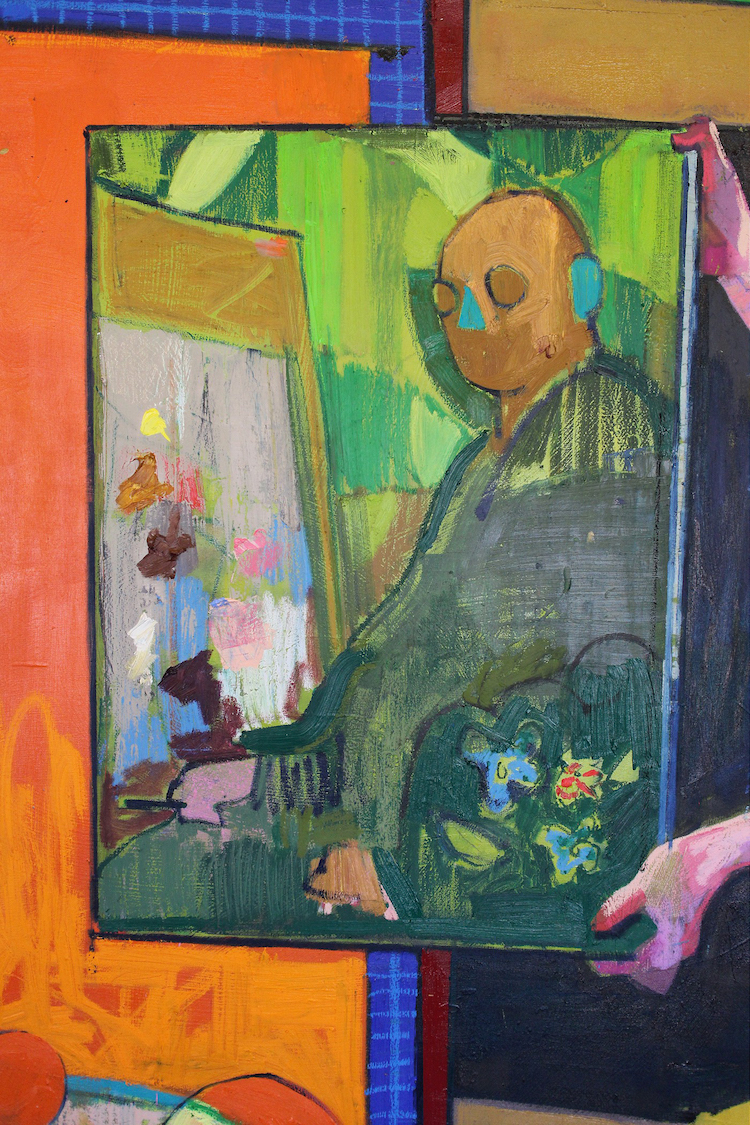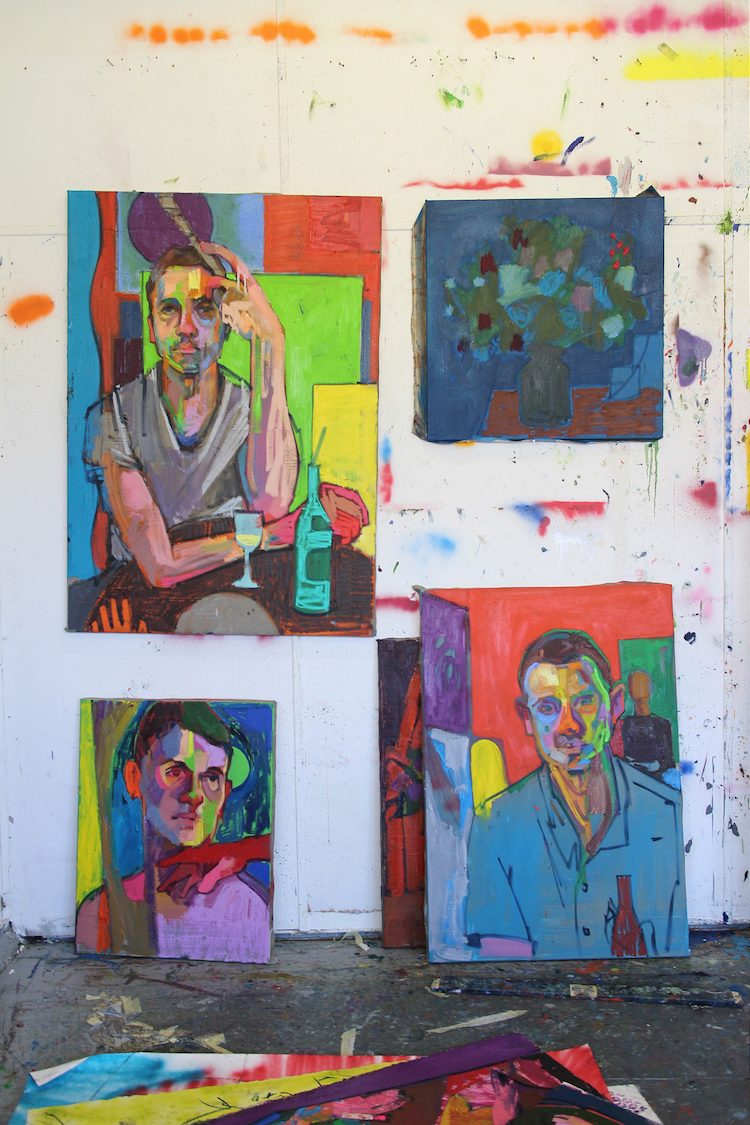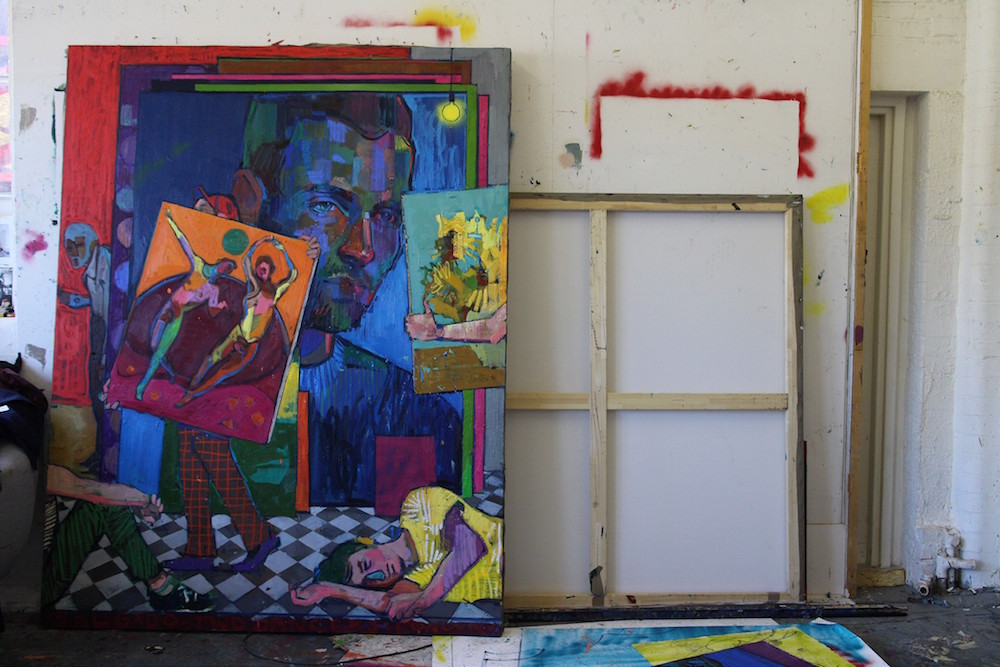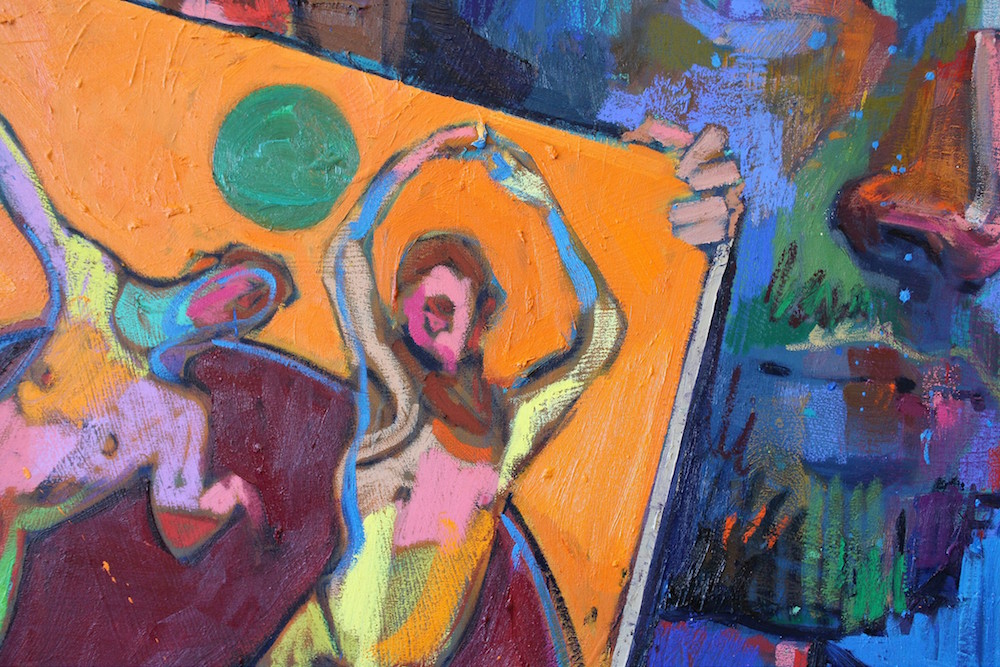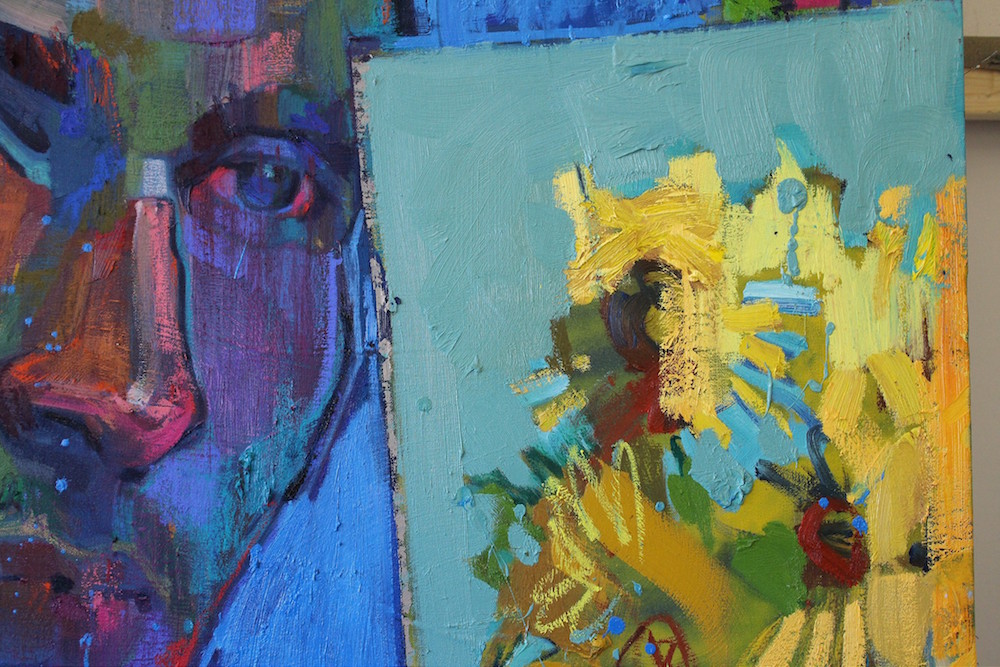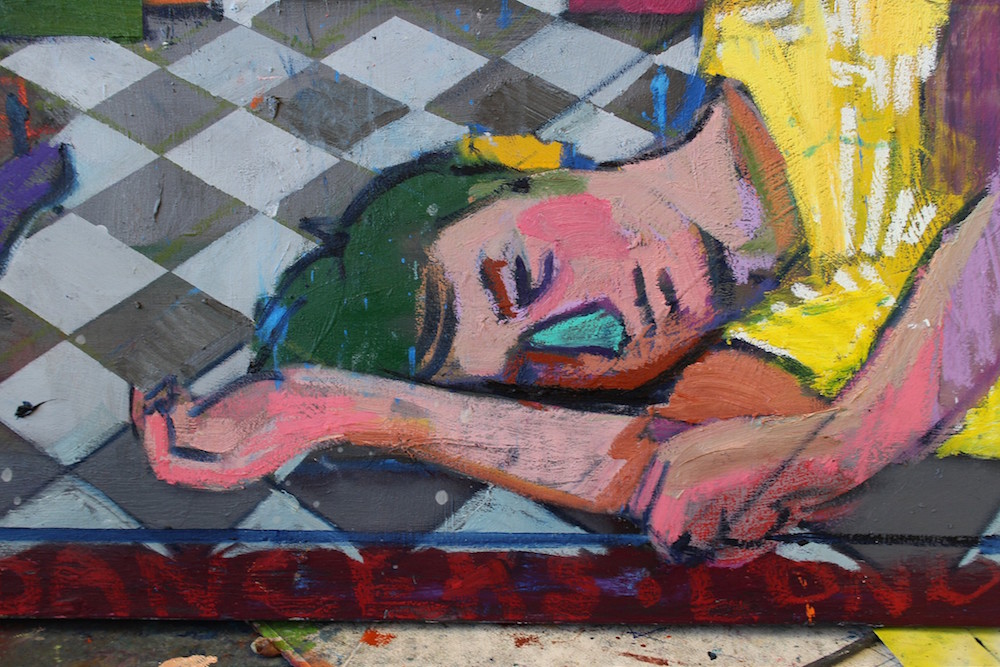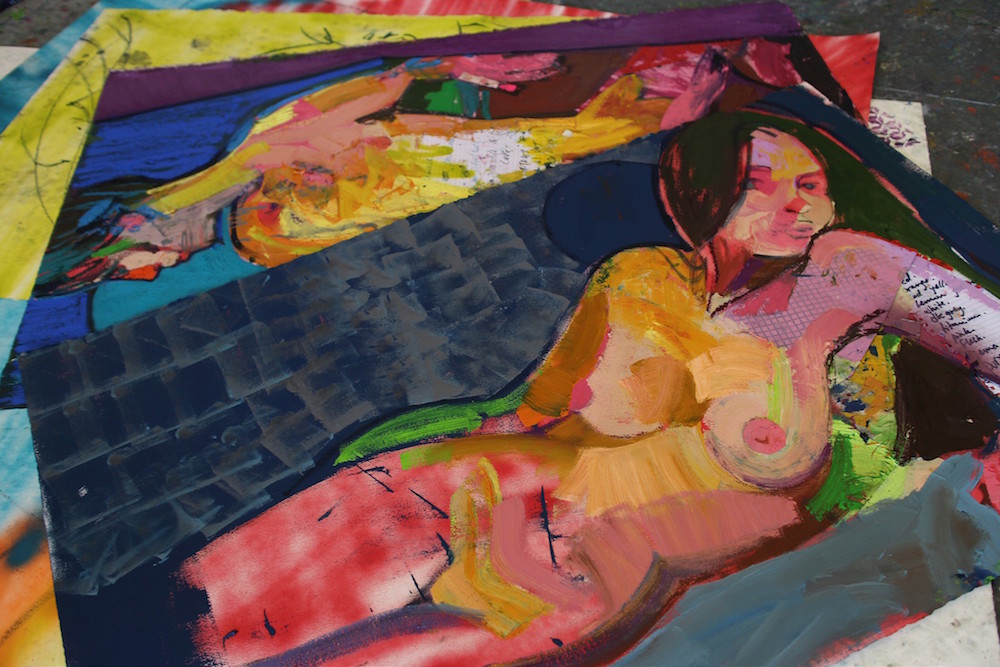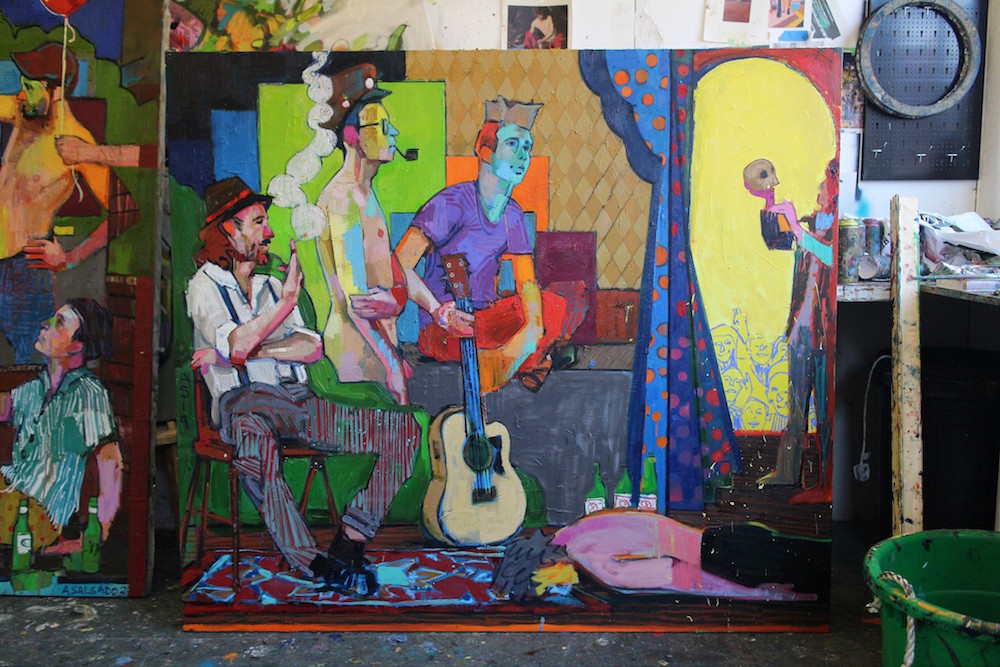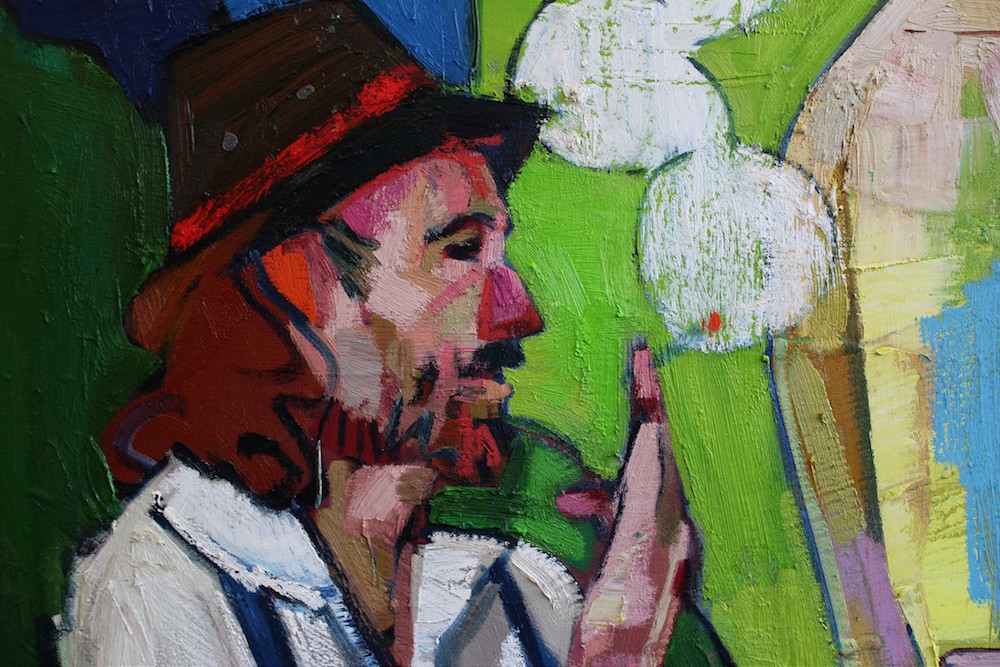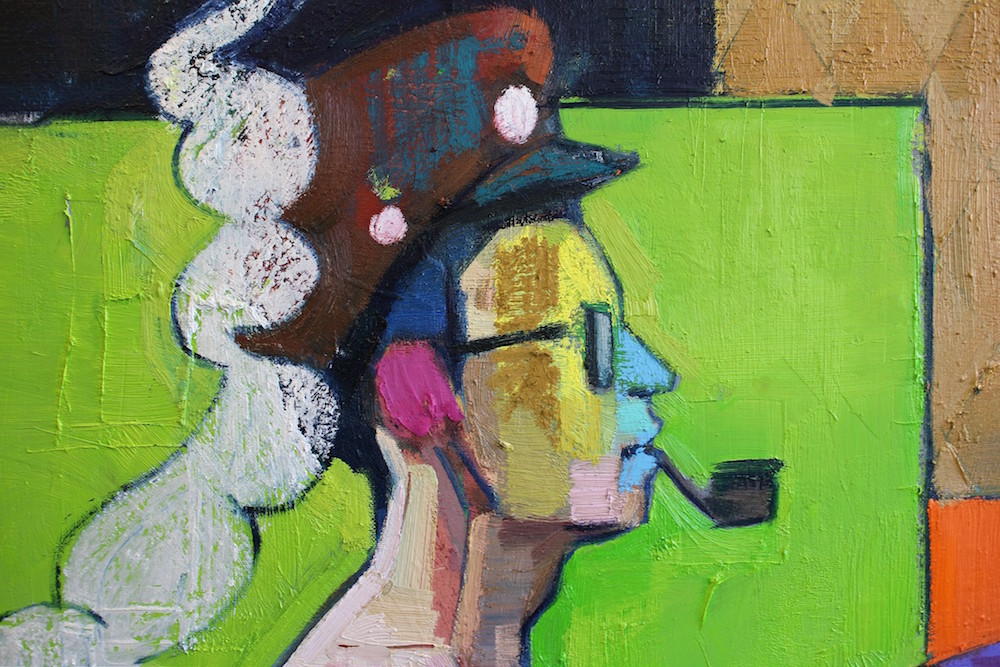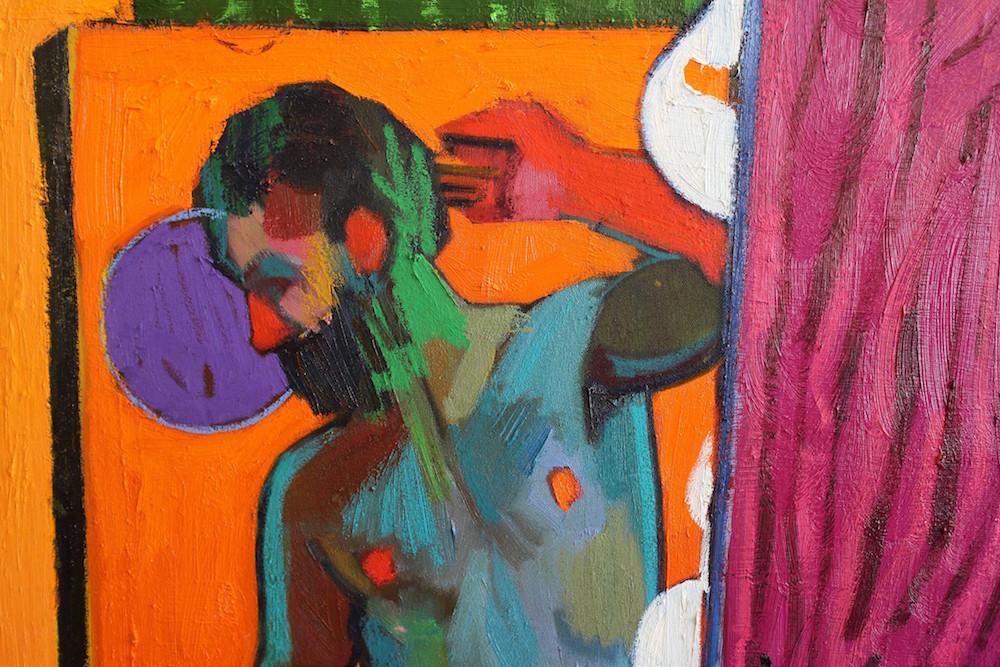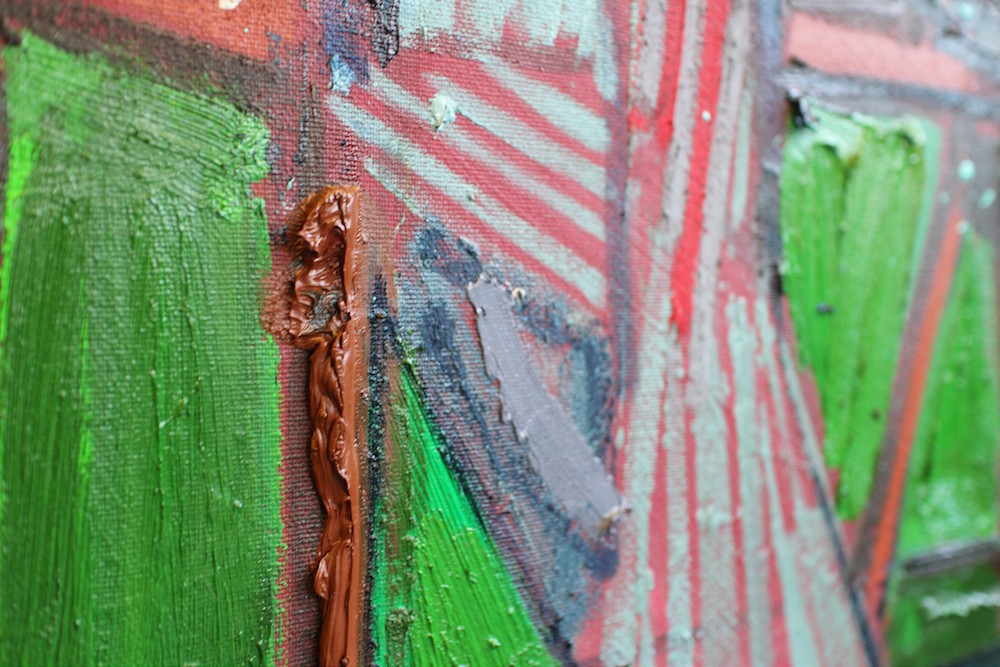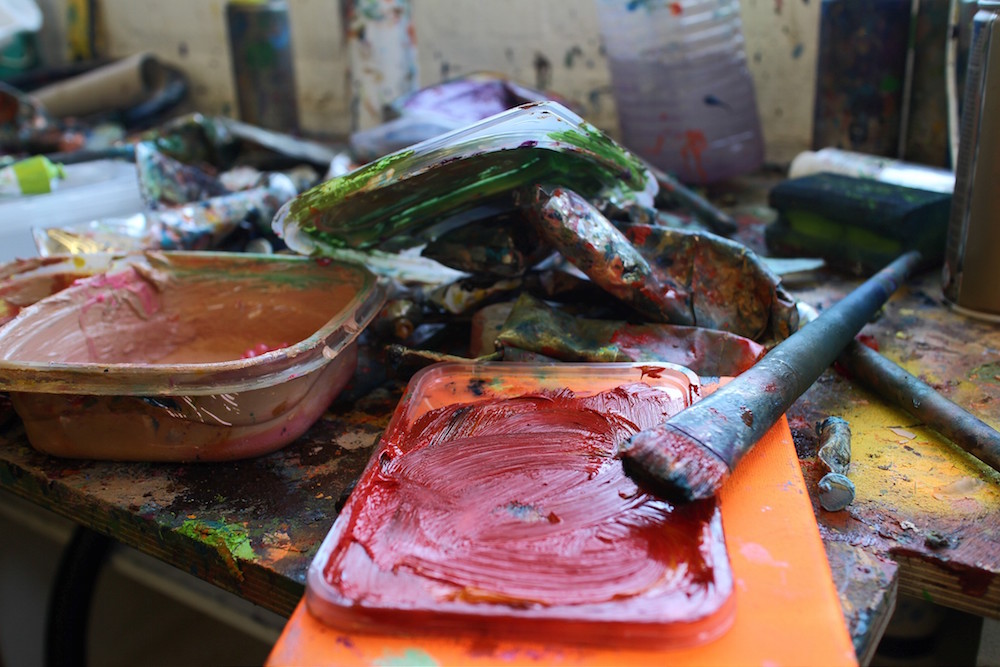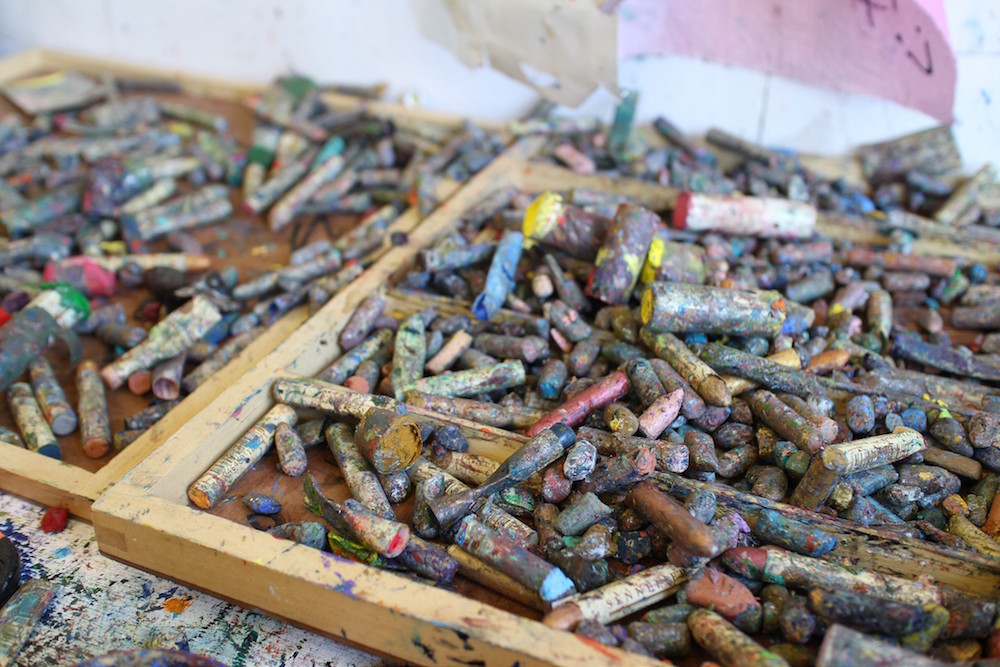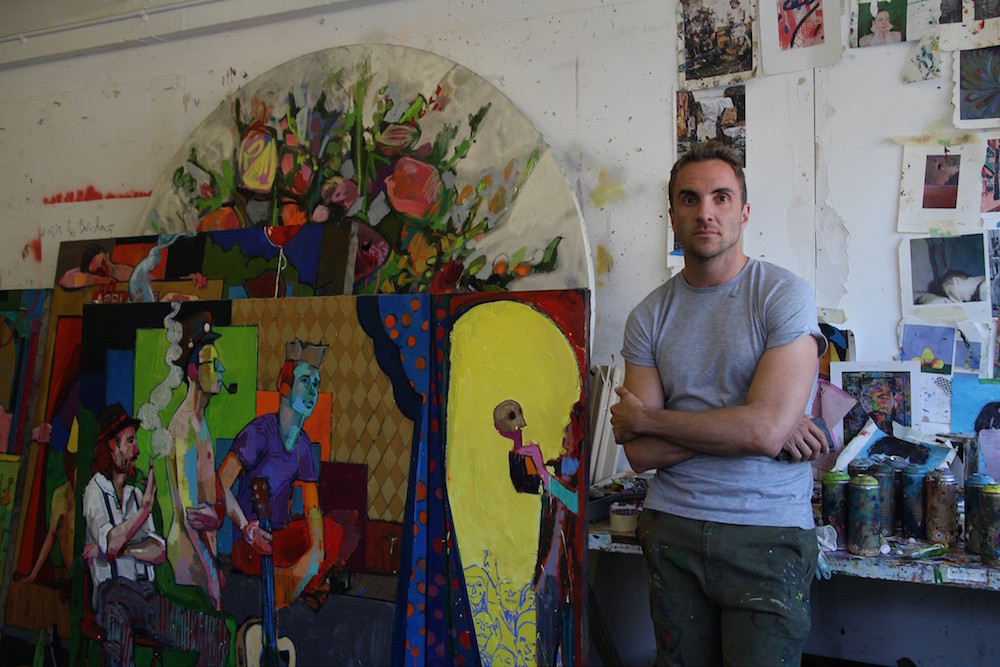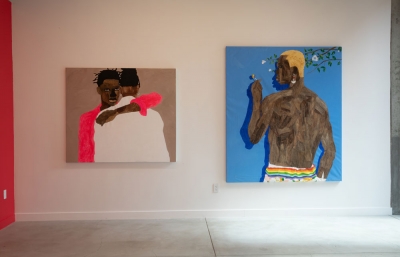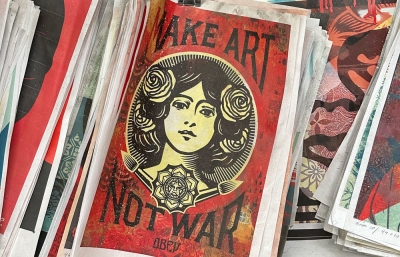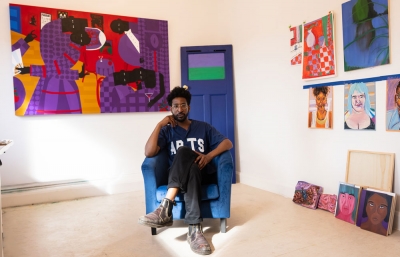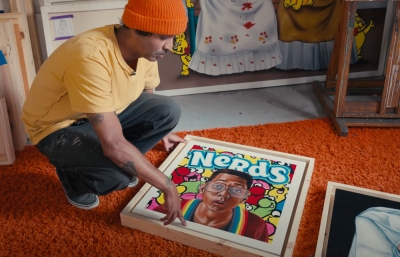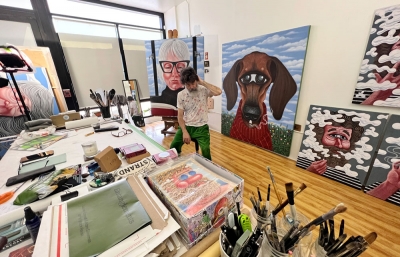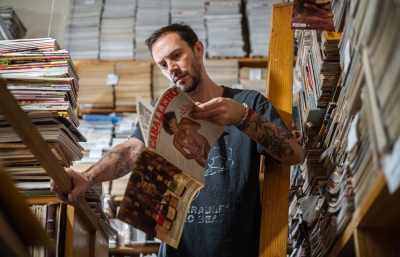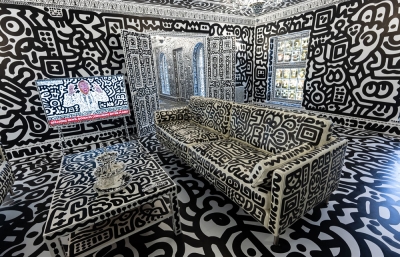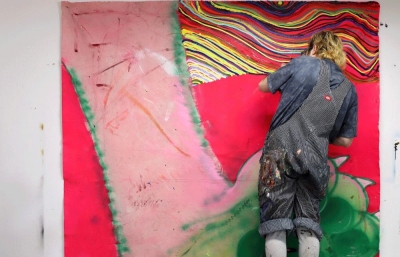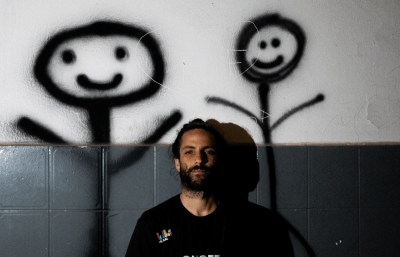A couple of weeks ago, we stopped by Andrew Salgado's studio in London to check out the impressive collection of paintings he's been working on recently. Stepping away from his signature single-person portraits enriched by layers of drawing and ornamentation, Salgado began constructing impressive, multi-layered and multi-angled works filled with perspective play and unexpected large-scale color-shifts. This evolved naturally, and the new works feel richer in narrative, matching the intense brushwork and rich texture of oil pastels, like zoomed-out, big-picture versions of previous works. It's a treat to inspect the new work up close before his debut presentation in Miami in December, topped off by a chat about the process.
Sasha Bogojev: What draws you towards building multi-perspective works instead of your typical portraiture format?
Andrew Salgado: I guess that ultimately the portraits started feeling one-dimensional, both for me to execute and for the viewer to read. I have always been interested in narrative, and creating works that have more layers allows me to explore some sort of relationship among the pieces themselves. I'm currently trying to 'take one step back,' for instance, to decontextualize the image through one more layer of divorce and create 'a painting of a painting'. So, now, large-scale portraits make something of a recurrence in my work but are framed within another painting as characters perform around them. It's a bit self-reflexive and self-aware, but I think my work has always been both those things, I'm really just drawing attention to it in a more evident way now. Also, I just like adding things to a painting... I am a maximalist, and this allows me to throw in more and more, little 'inside-jokes' or countless references.
Is there some kind of narrative built within an image?
Yeah. I think we view narrative pejoratively unless it's loaded with humor... But why should that be so frowned upon? I like working in 'bodies' of work and the notion that each body of work shelters its own sort of greater mythology; each stage of my life becomes paraphrased and re-staged in any number of ways. Sometimes it's very matter-of-fact, but more and more recently, it's been codified. And I don't tell the viewer what they need to think because any reading of the narrative is warranted. Why limit what people want to see?
How do you build an image at this point? Is it visual or do elements construct a storyline?
I think it would be false to say I am conscious of the storyline before going in. I always tell young artists to "create first, and let the concept envelope the works" instead of the other way around, which, contrary to art school, is a more intuitive way of working. But I often begin with shapes or compositions and let things evolve. I also embrace a messier and cruder way of making that's more prone to mistakes. These days, everyone creates work that's obviously rendered first with computers, or made to look like they are computer-rendered, but so many of these representations feel cold to me. I like seeing the marks and the artist's choices. You see the ghosts of my choices, mistakes, and how the painting grows technically, and also the way that the story grows and evolves. Things get added, things get taken out, things get painted over. Each traces its own creation, and I like the topographic surface texture that results. The story becomes inside and outside of the painting itself. The painter's ghost lurks within each piece.
It feels like your palette is becoming bolder. Is it to go really wild in picking colors?
I jokingly said the other day that if you buy a tube of 50ml paint and it costs £35, you don't want to pollute that color with a cheap A series titanium. I was joking, but there's truth to that. I like to celebrate color. I always try going darker and murkier and calmer, but it just ends up circling back to some blinding orange or yellow. I like texture. I like color, I like noise. And I like painters who also like color and texture and noise. So it's about embracing your perceived flaws and making them your fortes.
How challenging is it to work on this scale?
I have always tended to veer towards really large or really small. Both have their challenges. But it was Daniel Richter's PINK FLAG WHITE HORSE that I saw at the Morris and Helen Belkin Gallery while a student at the University of British Columbia, Vancouver in 2005 that was cathartic. That giant black sea painting with the refugees in a blow-up raft... I was swallowed by that piece. Sublime. It changed my life forever.
Photo credit by Sasha Bogojev

